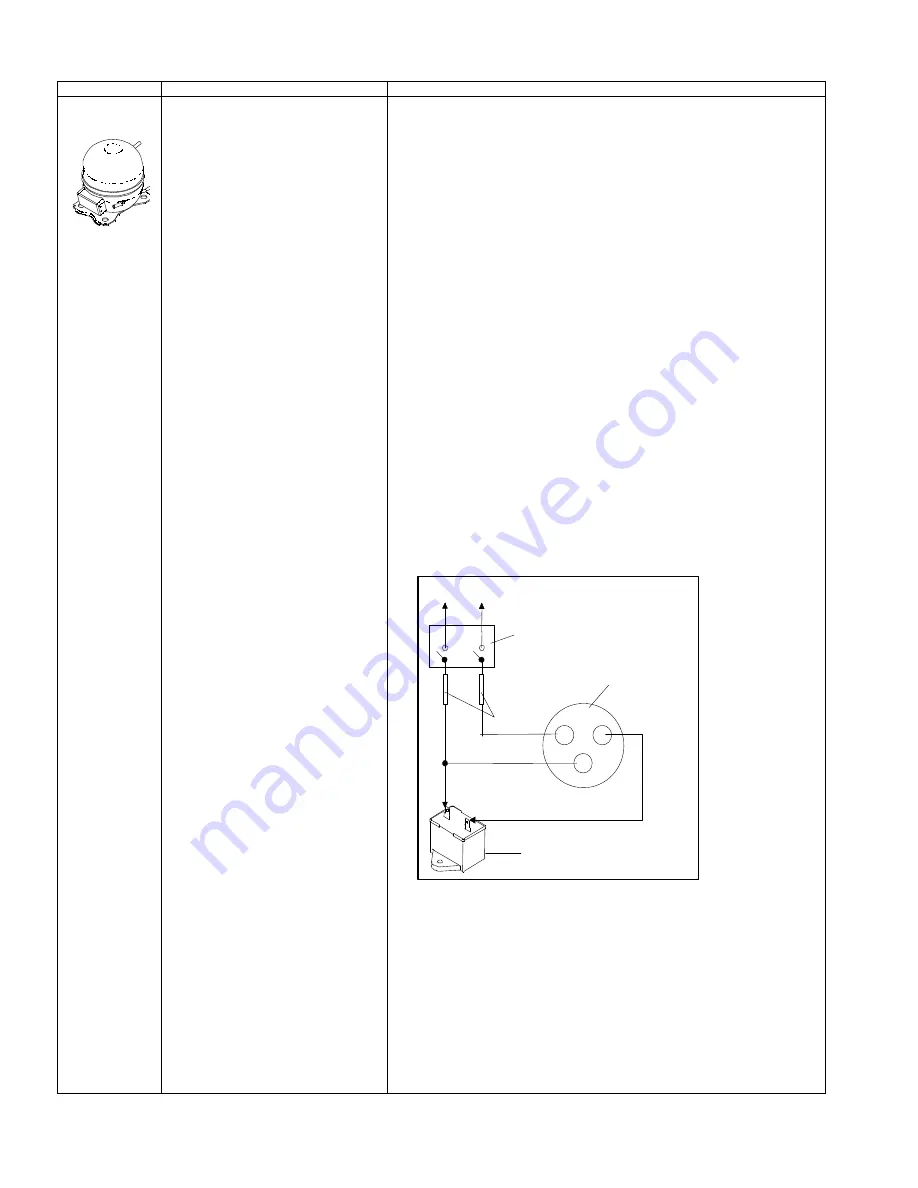
RS5280001 Rev. 0
24
Component Testing
Component
Description
Test Procedures
Compressor
When compressor electrical circuit is
energized, the start winding current
causes relay to heat. After an amount of
starting time, the start winding circuit
turns off. The relay will switch off the
start winding circuit even though
compressor has not started (for example,
when attempting to restart after
momentary power interruption).
With “open” relay, compressor will not
start because there is little or no current
to start windings. Overload protection will
open due to high locked rotor run winding
current.
With “shorted” relay or capacitor,
compressor will start and overload
protector will quickly open due to high
current of combined run and start
windings.
With open or weak capacitor,
compressor will start and run as normal
but will consume more energy.
Resistance test
1.
Disconnect power to unit.
2.
Discharge capacitor by shorting across terminals with a resistor for 1
minute.
3.
Remove leads from compressor terminals.
4.
Set ohmmeter to lowest scale.
5.
Check for resistance between
Terminals “S” and “C”, start winding
Terminals “R” and “C”, run winding
If either compressor winding reads open (infinite or very high resistance) or
dead short (0 ohms), replace compressor.
Ground test
1.
Disconnect power to refrigerator.
2.
Discharge capacitor by shorting terminals through a resister.
3.
Remove compressor leads and use an ohmmeter set on highest scale.
4.
Touch one lead to compressor body (clean point of contact) and other probe
to each compressor terminal.
If reading is obtained, compressor is grounded and must be replaced.
Operation test
If voltage, capacitor, overload, and motor winding tests do not show cause for
failure, perform the following test:
1.
Disconnect power to refrigerator.
2.
Discharge capacitor by shorting capacitor terminals through a resistor.
3.
Remove leads from compressor terminals.
4.
Wire a test cord to power switch.
5.
Place time delayed fuse with UL rating equal to amp rating of motor in test
cord socket. (See Technical Data Sheet)
6.
Remove overload and relay.
7.
Connect start, common and run leads of test cord on appropriate terminals
of compressor.
8.
Attach capacitor leads of test cord together. If capacitor is used, attach
capacitor lead to a known good capacitor of same capacity.
Test configuration
9.
Plug test cord into volt-watt meter to determine start and run wattage and to
check for low voltage, which can also be a source of trouble indications.
10. With power to volt-meter, press start cord switch and release.
•
If compressor motor starts and draws normal wattage, compressor is
okay and trouble is in capacitor. relay/overload, freezer temperature
control, or elsewhere in system.
•
If compressor does not start when direct wired, recover system at high
side. After system is recovered, repeat compressor direct wire test. If
compressor runs after recovery but would not run when direct wired
before recover, a restriction in sealed system is indicated.
•
If compressor does not run when wired direct after recover, replace
faulty compressor.
C
R
S
Fuses
Capacitor
Compressor
Switch
To AC supply
















































